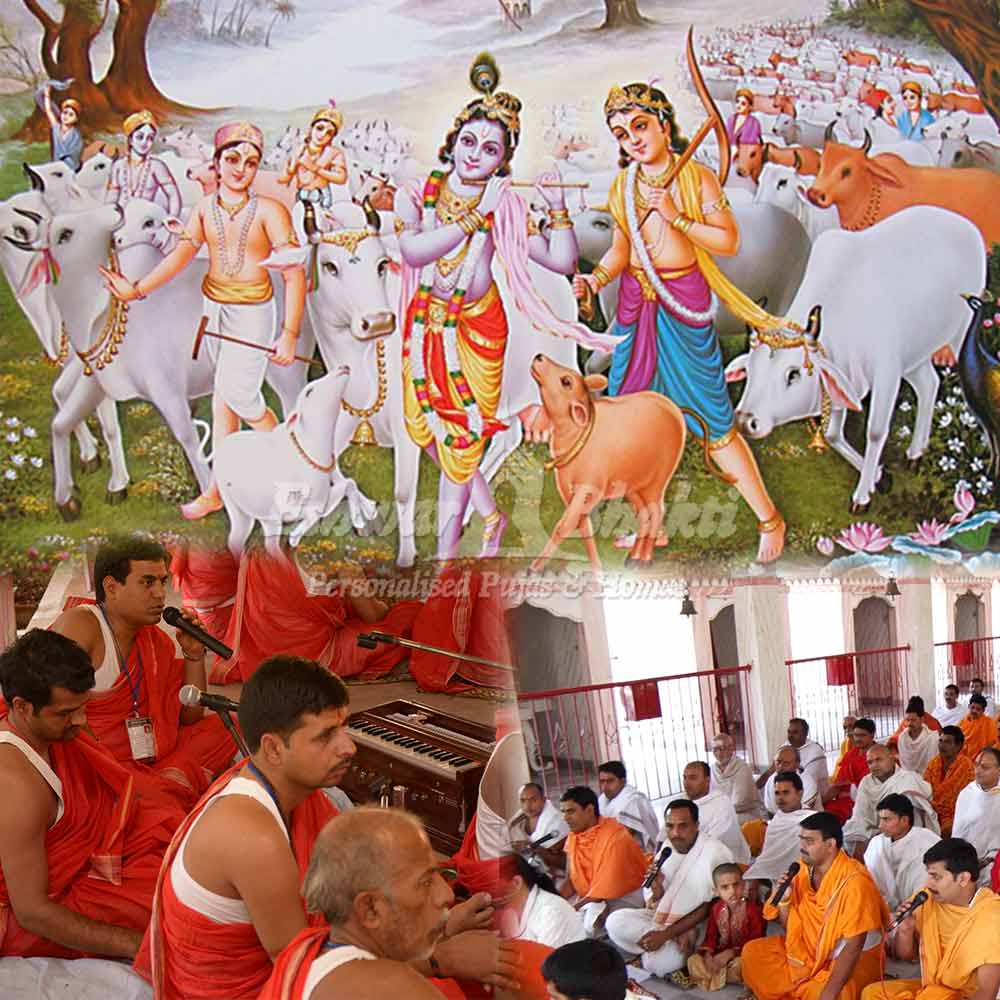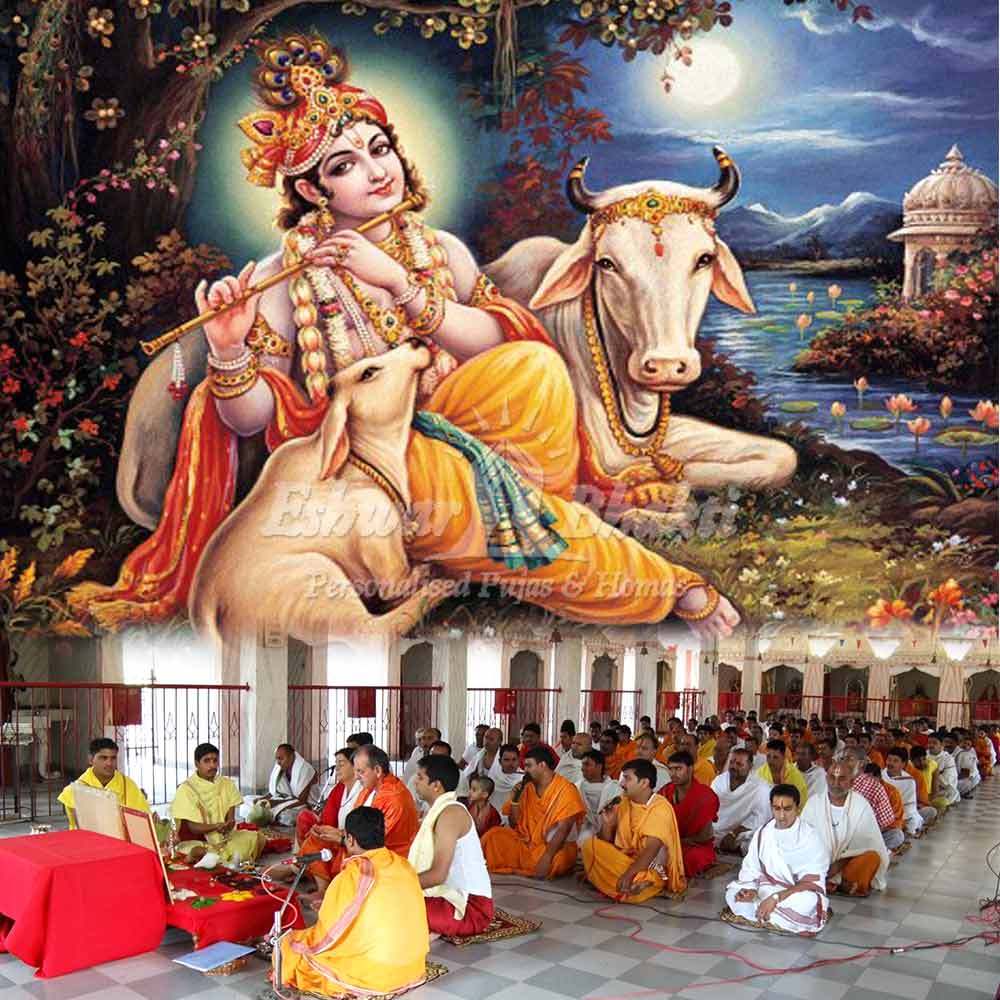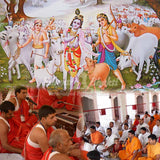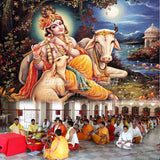





Surbhi Mantra Japa
For worldwide peace, benefit of mankind, bestows riches upon humanity
- $820.00
- $820.00
- Unit price
- Fees: per
Surbhi mantra originated from Srimad Bhagwad Puran and Brahma Vevart Puran. Shri Krishna performed the first Surbhi mantra japa with His entire family to please Surbhi or Kamdhenu. The Surbhi mantra japa is done for Lok Kalyan (benefit of the mankind), worldwide peace and bestowing wealth and riches upon humanity.
Kamadhenu cow or Surabhi (meaning ‘the fragrant one’) is the mother of all cows. All the gods reside in the body of Kamadhenu. Her four legs are the scriptural Vedas; Her horns are the triune gods Brahma, Vishnu and Shiva; Her eyes are the sun and Moon, Her shoulders the fire-god Agni and the wind-god Vayu, and Her legs are the Himalayas.
Kamadhenu is often addressed by the proper name Surabhi, which is also used as a synonym for an ordinary cow. The Mahabharata records that Kamadhenu-Surabhi rose from the churning of the cosmic ocean (Samudra manthan) by the gods and demons to acquire Amrita (ambrosia, elixir of life). As such, She is regarded the offspring of the gods and demons, created when they churned the cosmic milk ocean and then gifted to the Saptarishi, the seven great seers. She was ordered by the creator-god Brahma to give milk, and and ghee for ritual fire-sacrifices. Various other scriptural references describe Surabhi as the mother of the Rudras including Nirrti (Kashyapa being the father), the cow Nandini and even the serpent-people nagas.
Kamadhenu is a divine bovine-goddess, the mother of all cows. She is a miraculous "cow of plenty" who provides her owner whatever he desires and is often portrayed as the mother of other cattle as well as the eleven Rudras. In iconography, she is generally depicted as a white cow with a female head and breasts or as a white cow containing various deities within her body. All cows are venerated in Hinduism as the earthly embodiment of the Kamadhenu. As such, Kamadhenu is not worshipped independently as a goddess, and temples are not dedicated to her honor alone; rather, she is honored by the veneration of cows in general throughout the observant Hindu population.
Kamadhenu, the sacred cow which grants all wishes and desires, is an integral part of Hinduism. This divine cow, which lives in swargalok (heaven), emerged from the ocean of milk (kshira-sagar) at the time of samudra-manthan (the great churning of the ocean by the gods (suras) and demons (asuras). It was presented to the seven sages by the Gods, and in course of time came into the possession of Sage Vasishta.
In Vedic description, Kamadhenu is a goddess manifesting as a divine cow who is considered to be the mother of all cows. Like her daughter Nandini, she could grant any wish for the true seeker. Kamadhenu provided Vasishta with his needs for the sacrifices. Kamadhenu (kama-dhenu, ‘wish-cow’), was a miraculous cow of plenty who could give her owner whatever he desires.
The celestial cow belonging to the sage Vasishtha, was produced by the gods at the churning of the cosmic ocean. She is supposed to grant all desires and hence is termed the cow of plenty.
Kamadhenu, the "cow of wishes or desires," has a bovine body, a female head, polychromatic wings like a tropical bird, and a peacock's tail. Her milk is streaming over a Shiva linga, only to be channelled by the yoni to become a sacrificial oblation in the sacred fire. Various brahmins in the foreground (center photo) pour ghee (clarified butter), another common offering, into the fire. The spiritual significance of the cow is readily apparent in the use of milk, butter, and ghee in vedic ritual ceremonies. Shiva and Pravati look on from above, surrounded by waves of light, making gestures of blessing, protection and assurance.
Service includes: Puja of Surbhi, Puja of Lord Krishna, Sankalpa, Surbhi mantra jaap 125,000 chants, Aarti, Pushpanjali.
Duration: 2 days
No. of priests: 7
Eshwar Bhakti priests will perform your Puja as per the Vedic procedure. Please mention your birth details (name, date, time, and place of birth), & Sankalp (your wish) at checkout. This is an individual Puja (you may book puja only on your name or include your near/dear ones in your puja).
You can book this puja with or without a DVD. An hour-long DVD will have the main elements of your puja: Sankalpa, Abhishek or invocation mantras, presiding deity mantra chants, Homa and Aarti. If you opt for a DVD, we will upload it on a cloud link for you to download and watch online, within a week of your puja completion. If you don't opt for a DVD, we will email few short video clips and photos immediately upon successful completion of your ritual.
Performing your puja ritual with love and utmost care is our motto. We perform only Individual Personalized rituals. No group rituals. Here are the key steps to help you understand the process:
- You add a ritual to your shopping cart, after reading the benefits and based on your concerns.
- At the time of booking your ritual(s), you are asked to provide your "Name, birth details, Sankalpa and instructions" on the shopping cart page. You can also mention your Gotra, Nakshatra and Rashi details there (if you know).
- Immediately after the receipt of your order, we start identifying the most auspicious date and time to perform the ritual.
- An email is sent to you within 12 hours of order confirmation, which would comprise:
- Date on which your puja would be performed.
- Complete timings and duration of your ritual.
- Sankalpa time: When you can join us and pray for the fulfillment of your wish.
- Zoom meeting details for taking the Sankalpa.
- Mantra and meditation instructions to follow at your end.
- Dietary precautions on the day of your puja.
- List of some easy to get items, to take the Sankalpa.
- You can also email us your photo, at contact@pujayagna.com, to keep during the performance of your puja (optional).
- On the scheduled day and time, you can join over Zoom to take your Sankalpa (optional). You will be guided during the call to take the Sankalpa.
- Immediately after the successful completion of your ritual, an email is sent with photos/videos of the ritual.
- In case of rituals lasting over several days, you will receive daily updates over email, WhatsApp or Viber.
Have more queries, read Frequently Asked Questions.
 Related Pujas
Related Pujas
- From $820.00
- From $820.00
- Unit price
- Fees: per
- From $820.00
- From $820.00
- Unit price
- Fees: per
- From $820.00
- From $820.00
- Unit price
- Fees: per
- From $820.00
- From $820.00
- Unit price
- Fees: per
- From $820.00
- From $820.00
- Unit price
- Fees: per
- From $820.00
- From $820.00
- Unit price
- Fees: per
- From $820.00
- From $820.00
- Unit price
- Fees: per
- From $820.00
- From $820.00
- Unit price
- Fees: per
- From $820.00
- From $820.00
- Unit price
- Fees: per
- From $820.00
- From $820.00
- Unit price
- Fees: per
- Choosing a selection results in a full page refresh.




